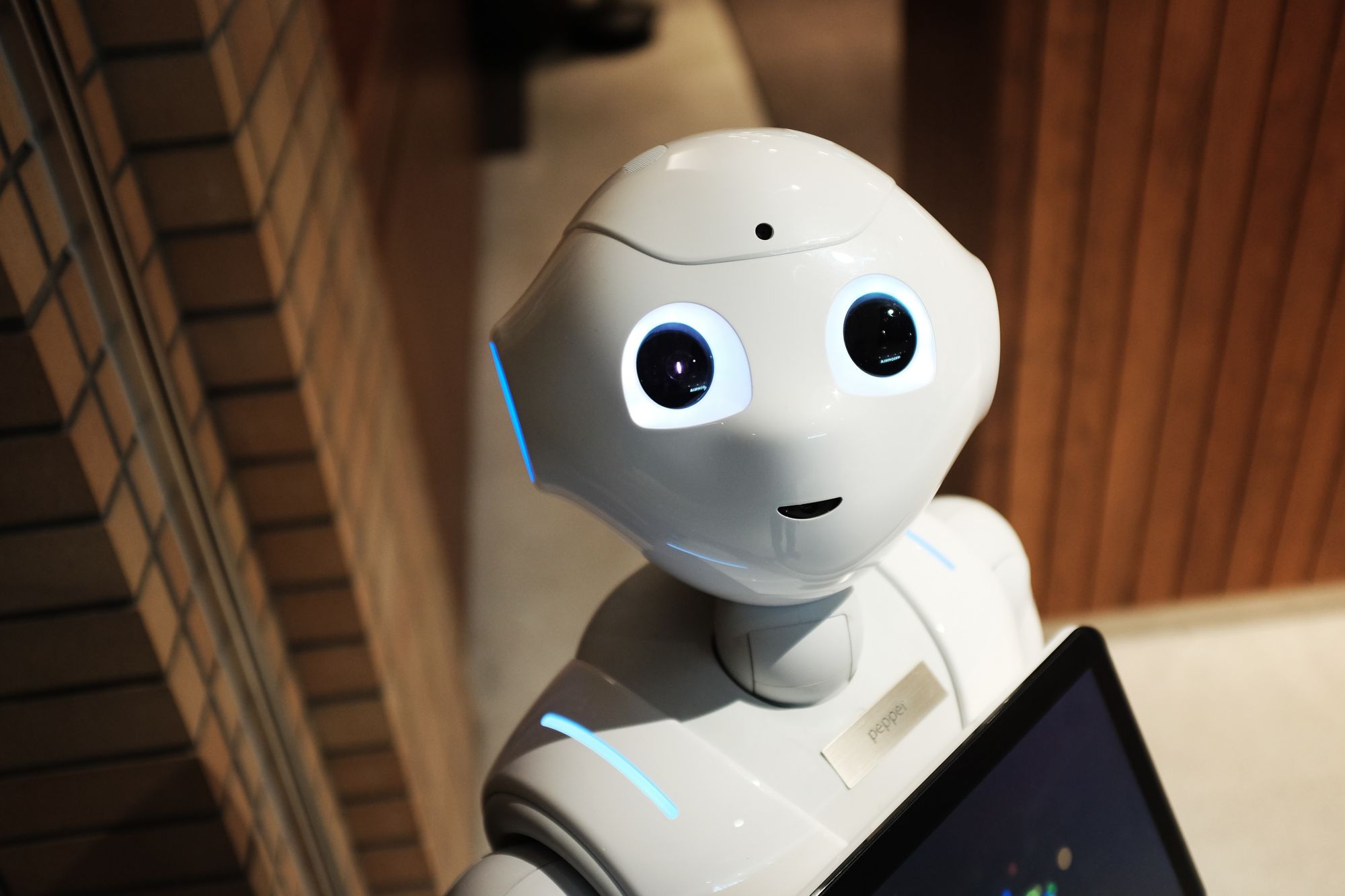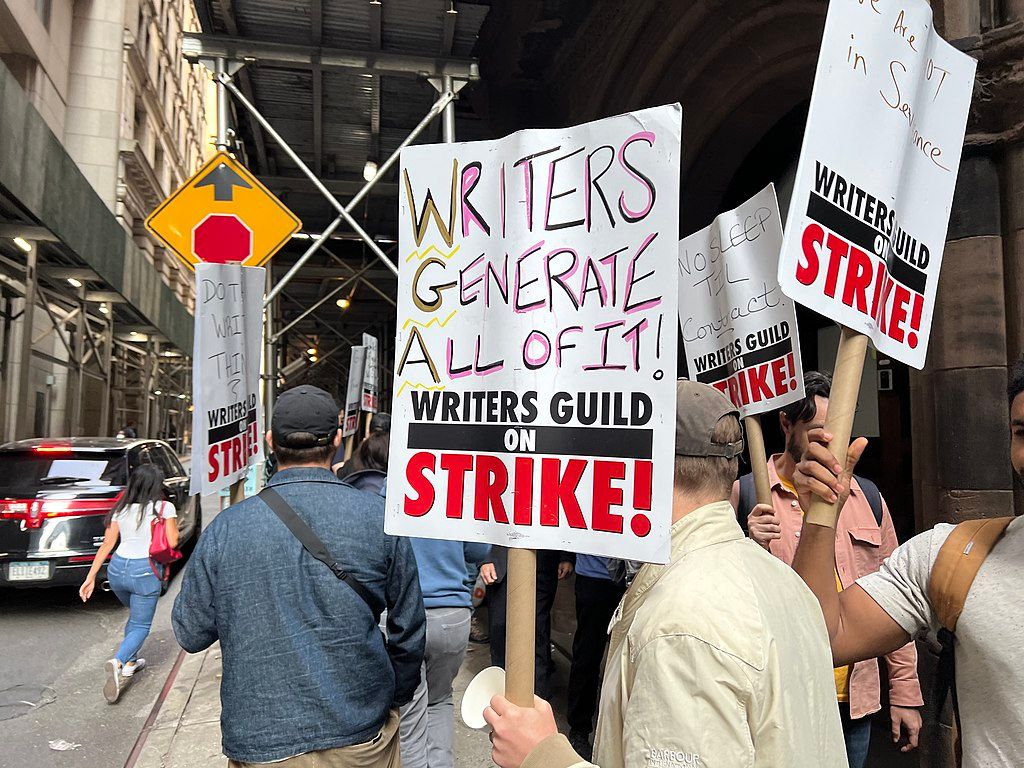
Labor Day is always a great reminder of the ways American capitalism continues to exploit workers any way it can get away with.
Before workers got organized—and began wielding the power of unions—things like the weekend, the 8-hour workday and the right to strike didn't exist. Workplaces lacked basic safety standards. Children still worked long hours in mines and factories.
As Samuel Gompers, one of the architects of the modern labor movement, said more than 100 years ago:
“What does labor want? We want more schoolhouses and less jails; more books and less arsenals; more learning and less vice; more leisure and less greed; more justice and less revenge; in fact, more of the opportunities to cultivate our better natures, to make manhood more noble, womanhood more beautiful, and childhood more happy and bright.”
In other words, labor wants everything that today's right-wing billionaires and Christian extremists oppose.
Despite the fact that support for organized labor remains high—unions are backed by 71% of Americans, including a majority of Republicans—the attacks on unions and collective bargaining are unrelenting.
Who's getting paid?
Whether it's Starbucks, Amazon, Tesla, or the GOP as a whole, our capitalist overlords remain dedicated to busting unions, rewriting child labor laws and condemning more families to poverty.
The ongoing effort to roll back the long-term victories of the labor movement comes at a time of intense and growing income inequality in a society where, for all the progress, much of the most deserving work being done—from farm labor to teaching to prison labor to full-time parenting—remains woefully underpaid.
Making matters worse, despite the reality that one of the reasons corporate America agreed to accept a shorter workweek was to give workers enough time off to buy stuff, they're now also trying to replace even more of the consumer class with robots.

While robotic automation (RA), AI, and machine learning have been part of the corporate lexicon for many years, the arrival of ChatGPT and its counterparts has made everyone from screenwriters to journalists to Hollywood extras—even poets!—realize they could soon become obsolete, too.
Before ChatGPT, much of the corporate jargon about RA was how it would enable humans and machines to work together, with the computers doing the boring, repetitive, mechanical stuff and humans freed to be more strategic and creative.
But now we realize that an AI model can be fed all of human knowledge (and art and creativity) and trained to regurgitate it in lots of new ways, extremely quickly and sometimes even accurately.
Everything previously written, drawn, photographed, filmed, or spoken by humans can now be repurposed by machines. Avatars can become movie stars. Body scans can live forever in crowd scenes. Writers? Who needs 'em.
The reality of AI: Labor exploitation
How did AI make such a giant leap forward in recent months?
Turns out it's not that it's not all done by chimpanzees on typewriters, but by millions of humans on hamster wheels:
In dingy internet cafes, jampacked office spaces or at home, they annotate the masses of data that American companies need to train their artificial intelligence models... While AI is often thought of as human-free machine learning, the technology actually relies on the labor-intensive efforts of a workforce spread across much of the Global South and often subject to exploitation.
Millions of people in emerging countries are now being exploited in a "vast task underclass" with pay as low as $1-$3 per hour.
Their real, human work has helped create the mirage of today's "artificial intelligence" which is also based on the real, human work of everyone who every created something that found its way onto the internet.

The future of storytelling
As the Writer's Guild and SAG-AFTRA strikes continue, book authors are also suing and speaking out against the use of copyrighted works to build generative AI models that give no credit or compensation to the authors whose works are used. And journalists are already losing jobs as companies such as Buzzfeed commit to "increasing speed and effectiveness."
Hollywood and media executives may dream of more riches for themselves being made possible by the "efficiencies" of AI.
But as PEN America CEO Suzanne Nossel wrote recently in The New Republic, "originality springs not just from ingested content but from life experience, social dynamics, and flights of imagination."
If AI simply "creates" by regurgitating elements of what has gone before, everyone who consumes news, reads books and watches movies will lose out.
So... who is getting paid?

While real journalists are being fired, famed authors are getting ripped off, and workers in the Global South are scavenging in "digital sweatshops," a new breed of "creator" is raking in the big bucks over on Elon Musk's hate-filled, bot-infested X app.
As I wrote in July, Musk and X CEO Linda Yaccarino "are now funding the most divisive and dangerous voices on social media." The first five-figure checks went out in July.
Among those taking advantage of the new X cash-for-tweets scheme are the Krassenstein twins. Made famous for their Trump "resistance" on Twitter, the Krassenstein twins were banned permanently from Twitter in 2019.
Reinstated by Musk despite (or because of) a shared enthusiasm for crypto scams, the Krassensteins became early boosters of Twitter Blue and were anointed by Musk with follows and engagement—and early enrollment in his monetization scheme.
In July, Brian Krassenstein explained on Twitter that his first payout of $24,305 was based on generating 2.18 billion impressions on his Blue-Checked account between February and July, 2023.
He also explained how he did it, with tips explaining how other users could succeed on Twitter in the Musk era:
- Try to avoid outbound links when you can. Twitter appears to penalize such links, but even without a penalty, when people leave Twitter they are less likely to comment on your post or reshare it.
- Use Photos. Although photos in posts do not appear to get additional weight, what they do do is attract eyeballs. When scrolling through a feed, an image is much more likely to garner attention than simply text. More attention = more clicks = more ads.
- Avoid hashtags as well as tagging users if you can. The more people click outside of your tweet, the less likely they are to engage with that tweet.
In other words, to please Musk you must seek to generate maximum engagement within Twitter—and never validate your post with a link to an actual news article.
In practice, this means users like the Krassensteins steal content from news sites in real-time—include original reporting and photographs—and repurpose that content into self-contained "stories" that ask questions and encourage replies in a "comments section" created simply to serve ads to unsuspecting eyeballs.
Need some examples? Here's how Brian Krassenstein: a) asked people to respond to a courtroom picture of the 3rd Trump arraignment; b) turned original Guardian reporting about Jack Smith's investigation into a self-contained Twitter news item; and c) converted the news of Tony Bennett's death into a monetizable online conversation.
Now that Twitter Blue posts can be up to 4,000 characters long, the Krassensteins have perfected the art of stealing news from other sources and generating revenue for themselves.
As with the new AI models, all the Krassensteins are doing is reshaping content from other sources.
Of course, people have been doing similar things with content on Twitter for years. But in the old days, we had credentials-based Blue Check verification to tell us who the trusted voices were—and sharing links to news sites was standard practice, not something that came with a financial punishment.
Now Musk is using Blue Checks as part of a pay-to-play amplification and (theoretical) monetization opportunity that gives more visibility and influence to the worst actors on social media—especially those who share his bigoted, Dark MAGA, anti-woke worldview.
Even if the Krassensteins get their facts straight in the content they share (and not all Twitter Blue users do), simply by diminishing clicks to original reporting they are helping Musk steal traffic (and revenue) that would otherwise go to legitimate news sources, further weakening the financial viability of actual journalism.
Despite his opposition to all other workers working from home, Musk is happy to pay top dollar to a Twitter Blue army that can tweet (and comment) all day long from their couches.
It's a lot easier than being a Tesla employee, where you're forced to work long hours for low pay in a hostile and unsafe work environment.
Maybe you believe Elon Musk that his X "everything app" is going to the moon. But he said that about Dogecoin, too. As of this writing, Dogecoin is down more than 90% from its 2021 high.
As with most get-rich-quick or Ponzi schemes, Musk's content monetization plan will likely bring real rewards only those already at the top of the pyramid—or who Musk personally chooses to favor in the future.
Happy Labor Day!
Thanks for reading! All content to Unprecedented is free—there's no paywall. Please feel free to share and sign up if you want to leave a comment. If you do enjoy the content, please support if you can...
Subscribe to Unprecedented
Subscribe to the newsletter and unlock access to member-only content.